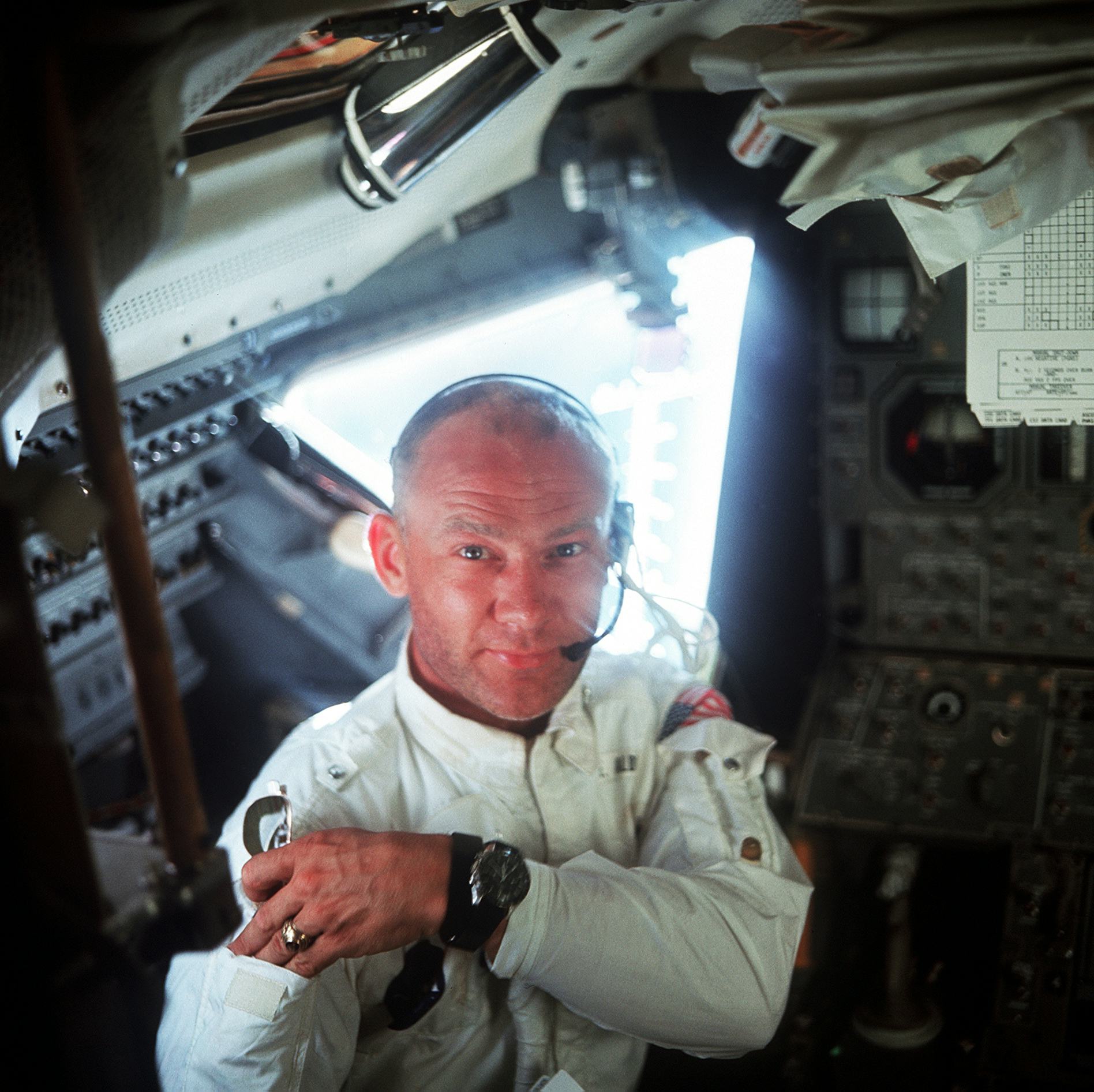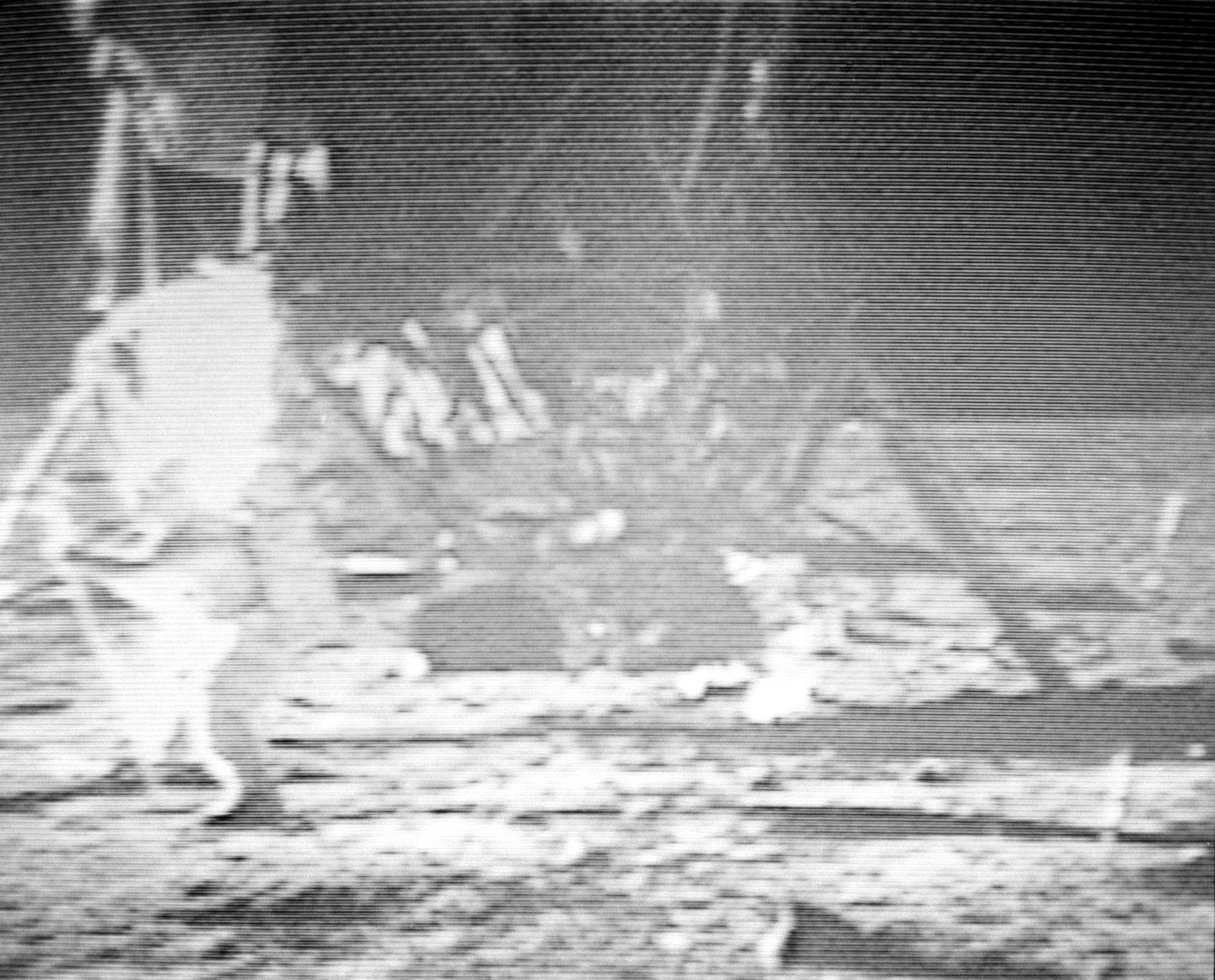
It’s getting exhausting calling out Moon landing truthers. Especially when a high-profile rom-com starring Channing Tatum and Scarlett Johansson makes a mockery of one of the greatest human achievements in all of history. This weekend, the new film Fly Me to the Moon hits theaters, telling the story of a 1969 advertising executive (Johansson) who is determined to film a “backup” version of the Moon landing in a studio, in case the real one fails. Tatum plays an astronaut, and the two fall for each other, in a silly movie about how the nature of love is a lot like flying to the Moon, or pretending to, or something. All harmless fun, right?
Well, no. While Fly Me to the Moon isn’t presented as a dramatic film purporting to unveil long-lost truths about the space race, it is built upon a frustratingly pervasive conspiracy theory that the Apollo 11 moon landing never took place, or in this case, that NASA would try to use taxpayer dollars to create a hoax. But, the historical and scientific evidence that we did, in fact, land on the Moon is overwhelming. And, because this movie is dredging up all those conspiracy theories again, it's worth restating why we know the 1969 Moon landing was very real.
Fly Me to the Moon attempts to split the difference between being a full-on tinfoil hat premise, and say, the very similar foundational ideas of 1978’s Capricorn One; which depicted a faked Mars landing. Writing for the Hollywood Reporter, Frank Scheck mocked Fly Me to the Moon by imaging a scenario in which “the creators got stoned one night and watched the cheesy 1978 movie Capricorn One,” and decided to try and remake it for 2024 with a love story. The stoner analogy is apt because Moon landing conspiracy theories tend to have a kind of dorm-room debate logic, in which the lack of evidence paradoxically makes believers in the hoax even more sure they are right.
In an interview promoting the film, Johansson seemed determined to not be conflated with Moon landing deniers in real life. “I am not a conspiracy theorist at all. I am so not that person. Of course we went to the Moon,” she said. But, added, “My producing partner Jonathan [Lia] definitely went down a dark web of conspiracy theories and knows all about that stuff.”

So, on some level, even if Fly Me to the Moon wants to shrug off its hoax-y premise as simply a fictional vehicle to tell a kooky love story, we now know that at least one of the producers was interested in conspiracy theories, which, on some level, fuel the hook of the film. One doesn’t need to go down a “dark web” to find the history of Moon hoax conspiracy theories. The trouble with these concepts is that they’re sadly, very mainstream, no matter how many times they’ve been debunked. In 2002, Buzz Aldrin — the second man to walk on the Moon — actually punched a conspiracy theorist in the face.
But outside of heroes like Buzz Aldrin, there is plenty of objective evidence that the Moon landing occurred. In light of the bogus concept behind Fly Me to the Moon, and to get a contemporary reminder of Moon landing evidence Inverse reached out to Dr. Brett Denevi, a planetary geologist at Johns Hopkins Applied Physics Laboratory, was a vice-chair of Lunar Exploration Analysis Group, is working on the Artemis program.
“There is a whole host of evidence to demonstrate the Moon landings occurred, including images from the Lunar Reconnaissance Orbiter Camera,” Denevi told Inverse. As she points out this is a relatively contemporary camera, launched back in 2009. “The camera is used to scout new landing sites like we are doing for Artemis, so it was built to take incredibly detailed pictures.”

Essentially, photographs taken relatively recently corroborate familiar images from the 1960s and 1970s. “These pictures are so detailed that we can see the past Apollo landers and other equipment left behind on the Moon,” Denevi adds. “You can see the flags and can even tell that most of the flags are still standing from repeat imaging that shows their shadows moving depending on the time of day.”
Denevi says she encourages people to look at the photos of the landing sites for themselves, and notes there are many of these images photos up on the LROC website. In them, you can still see “where the astronauts walked and where the lunar terrain vehicle drove because of the tracks they left behind.”
So, if Moon landing deniers want to double-check that the various Apollo landing sites are legit, they can figure out a way to send their own cameras there and compare what the LROC has already proven. Maybe a Hollywood producer like Jonathan Lia sending their own camera to the Moon to confirm what we already know. The budget for Fly Me to the Moon was 100 million dollars. The LCROSS satellite only cost 79 million. So, seems like there’s a better use of that money than to make an anti-science rom-com that nobody asked for.
Go ahead Hollywood, send your own camera. We dare you.







